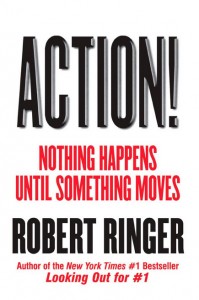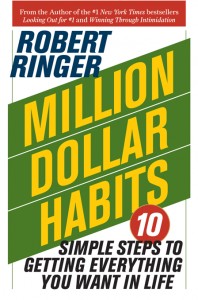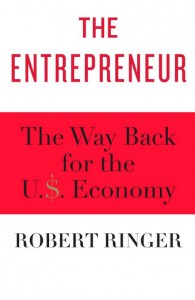Happiness Is Not a Passive Endeavor, Part II
Posted on November 20, 2014 by Lauri Ringer
When I introduced the science of happiness in the first part of this article, you might have been wondering, “How is all this applicable to my everyday life?” If so, let me assure you that I asked the exact same question of myself.
That said, I’d like to give you some specific answers to this question, as well as some ideas about how you can apply them to your life. Collectively, I like to think of them as a Happiness Global Positioning System.
Just like the GPS in your car, you have a starting point (where you are in your life right now) and an ending destination (a meaningful, fulfilling life). And just like the GPS in your car, you can choose different routes to get to your destination.
The happiness journey is comprised of a lot of small “day trips” that you incorporate into your current life. You do not need to:
- Commit large amounts of time;
- Change who you are; or
- Spend a lot of money.
Using the ideas in this article, it is my hope that you will learn how to utilize your Happiness GPS, maneuver the uneven roads on your journey, and reveal inner destinations that you didn’t even know existed.
Though genetics and circumstances account for 60 percent of the reasons behind happiness, it is the other 40 percent you can control with intentional activities that power your Happiness GPS.
Intentional activities fall into two categories — extrinsic (e.g., money, status, image) and intrinsic (e.g., personal growth, relationships, community). Research has shown that prioritizing extrinsic activities diminishes a person’s long-term satisfaction with life. It also lessens efficiency, functionality, and vitality.
A person who values extrinsic activities above all else runs the risk of what psychologists refer to as the “hedonic treadmill” or “hedonic adaptation.” Once the basic needs of food and shelter are met, whatever the level of wealth, possessions, or status you possess often results in wanting more.
As a result, you feel less pleasure from the things you already have. You might call it an acquisition callous.
Obviously, you cannot ignore extrinsic activities. You still need to earn money, and status and image are a part of life. Which is fine, so long as they are not your top priority.
On the other hand, research shows that people who incorporate intrinsic activities (again, personal growth, relationships, and community) into their lives are inherently satisfied and happy. Even a smidgen of time spent on intrinsic activities will increase your productivity, functionality, and longevity.
Following are some examples of how you can prompt possibilities into your life from intrinsic activities.
Personal Growth
Step out of your comfort zone. This may sound daunting, but the activities you choose for personal growth don’t need to be grandiose or uncomfortable. They just need to be new.
Think about things in your daily life that you could vary. You can choose simple concrete activities such as taking a different route to work, selecting a new menu item from your favorite restaurant, or cycling (instead of driving) to the local pharmacy.
Your brain enjoys novelty and will reward you with a release of dopamine — the feel-good drug I discussed in Part I of this article. Dopamine is a critical component of happiness and plays an important role in your physical health as well.
Even if you shake up your routine on a small scale, your brain’s dopamine production will improve. A few examples of activities that stimulate dopamine:
- Exercise. All exercise is good, but aerobic exercise is especially effective at dopamine production.
- Play. Take up a new hobby, go to a concert, or explore a new neighborhood.
- Learning. Enroll in a class, read a book, or watch a documentary.
- Meditation. Meditation is a huge dopamine factory and results in more happiness, peace, and good health. If you don’t know how to meditate, there are tons of meditation sites on the Internet that can guide you.
On the personal-growth day trips of your happiness journey, it’s also important to switch gears from what you don’thave to what you do have. Done properly, thiscan be a powerful shift.
Sharing produces dopamine for both the giver and the recipient, so it’s not surprising that research data confirms that people are happier when sharing. You can find many opportunities for sharing in your everyday life, many of which don’t take much time, effort, or money.
One of the simplest places to share is the checkout line in a retail store. It’s often easy to share with the stranger next to you in line. For example:
- Share your loyalty card so the stranger can get an in-store discount.
- Help the stranger make a choice by offering your firsthand experience with the products he is considering.
- Give the cashier a couple of bucks to complete the stranger’s purchase if he’s short on cash.
You can also use your business to share. Some examples include:
- A piano moving company donated the delivery of a piano to an assisted-living facility.
- A man offered his business offices and telephones as a site for a fundraiser for a local school.
- A media company arranged for a local food bank to pick up the leftover food from a party it hosted to launch one of its new products.
- A law firm planned a donation day for its employees, who donated gently used business clothes that were distributed to economically disadvantaged people for job interviews.
Remember, even small gestures of sharing stimulate your brain’s dopamine.
In Part III of this article, I will cover the other two intrinsic intentional activities — relationships and spirituality. But don’t wait. Get started with your happiness journey now.










